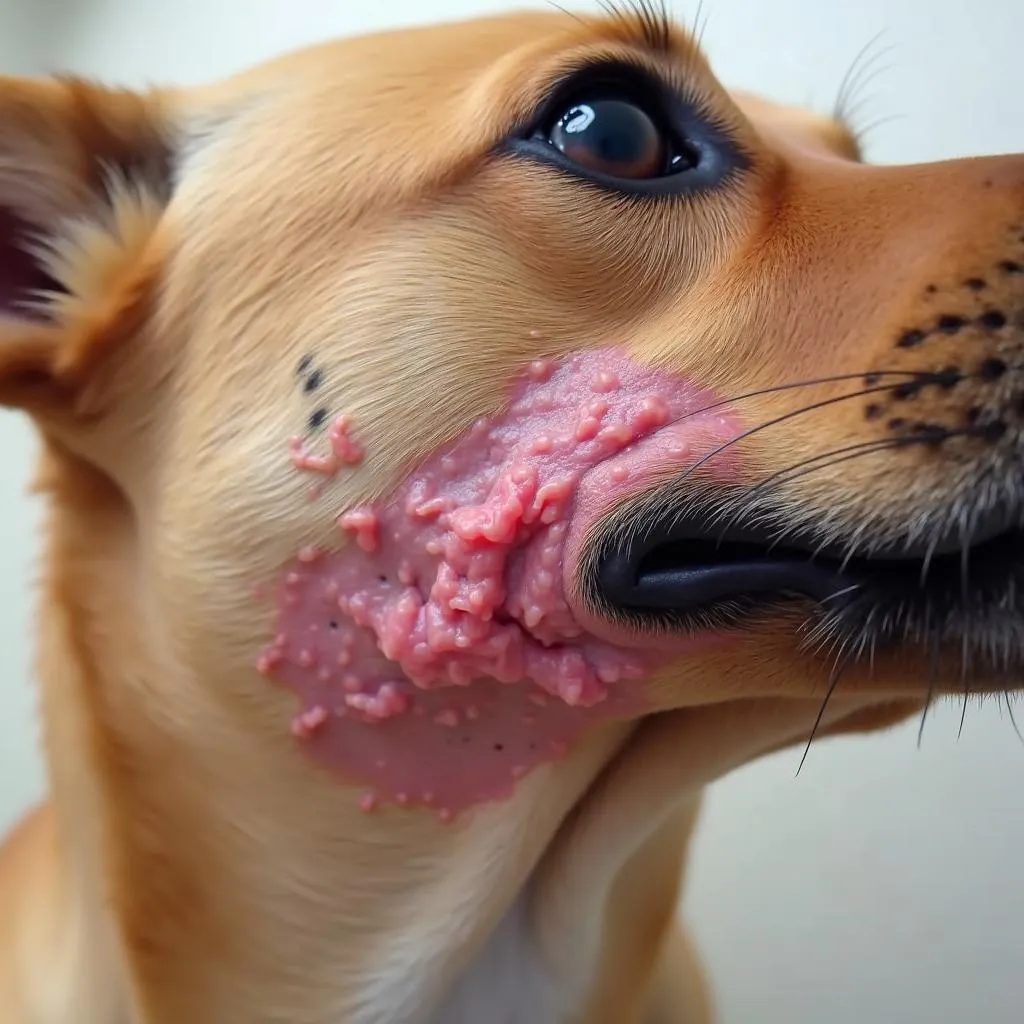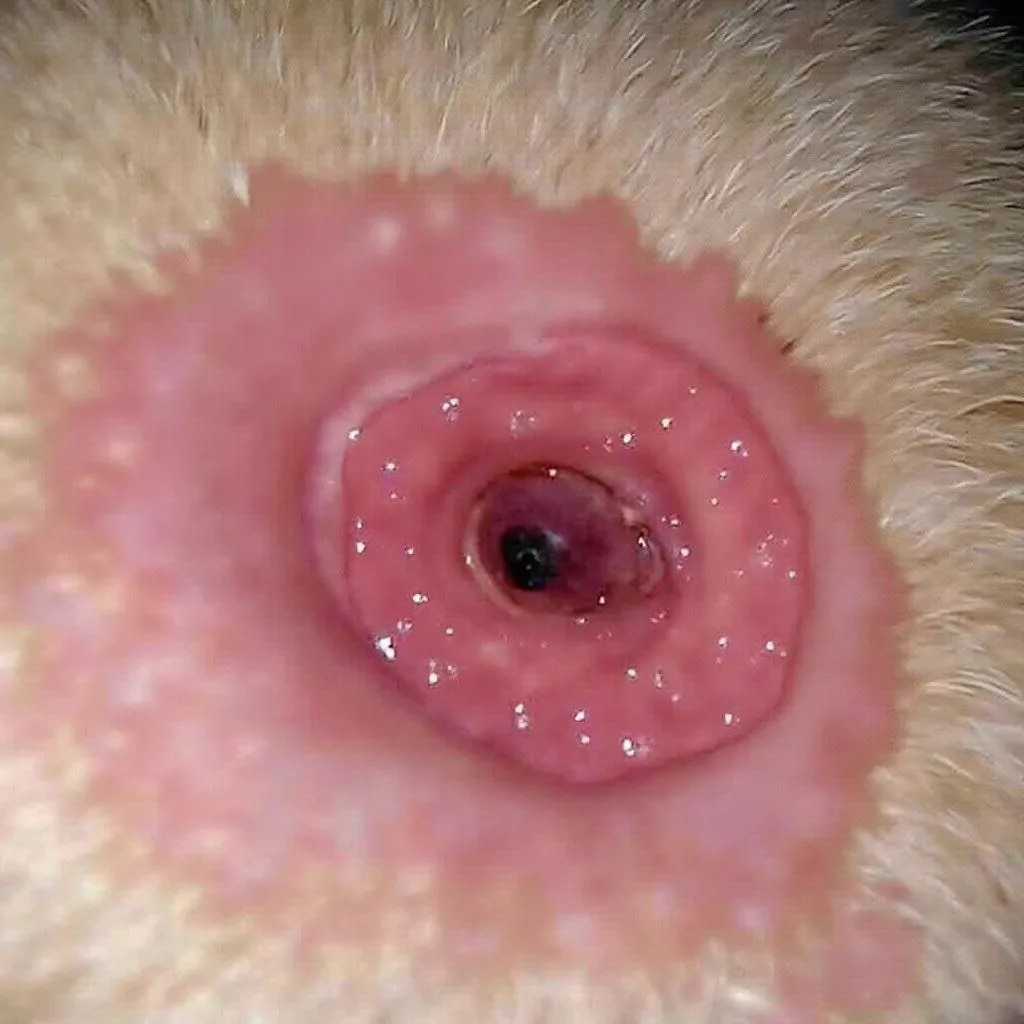“A dog is a man’s best friend,” the saying goes. And it’s true, our furry companions bring us joy and unconditional love. But sometimes, accidents happen, and our dogs might get injured, leading to wounds that need careful attention.
Understanding the stages of dog wound healing and how to care for your pup during this process can help you ensure a swift and smooth recovery.
The Stages of Dog Wound Healing
The healing process of a dog wound is a natural response to an injury, and it typically goes through four distinct stages:
1. Inflammatory Stage
This initial stage begins immediately after the injury and can last up to 3-5 days. During this time, the body’s immune system kicks into action to protect the wound from infection.
Signs of inflammation include:
- Redness: The wound area will become red and inflamed.
- Swelling: The wound may swell due to fluid build-up.
- Heat: The area around the wound will feel warm to the touch.
- Pain: Your dog might experience pain and discomfort.
2. Proliferative Stage
This stage follows the inflammatory stage and is all about repairing the damaged tissue. It lasts for several days to weeks. During this stage, new cells are formed to bridge the gap in the wound.
Here’s what you might see:
- Granulation Tissue: Pink, fleshy tissue begins to fill the wound.
- Contraction: The wound edges start to pull together.
- Epithelialization: The skin begins to grow back over the wound.
3. Maturation Stage
This is the final stage of wound healing, and it can take several months to complete. During this stage, the scar tissue becomes stronger and more flexible.
Here’s what you can expect:
- Scar Formation: A scar will develop at the site of the wound.
- Increased Strength: The scar tissue will continue to gain strength and flexibility.
- Color Change: The scar will gradually fade to a less noticeable color.
Dog Wound Healing: Pictures and Treatment Options
Understanding the healing process is important, but it’s also crucial to know how to provide the right care for your dog’s wound.
Here are some common dog wound treatment options:
1. Cleaning and Disinfecting
The first step in treating a dog wound is cleaning and disinfecting it. This helps prevent infection and promotes healing.
- Clean Water: Use warm, clean water to gently rinse the wound.
- Antiseptic Solution: Apply a gentle antiseptic solution, such as diluted chlorhexidine, to the wound. Avoid harsh chemicals like hydrogen peroxide, as they can damage healthy tissue.
2. Bandages and Dressings
Depending on the severity of the wound, your veterinarian may recommend bandages or dressings.
- Bandages: Bandages help protect the wound from dirt and debris.
- Dressings: Dressings can provide additional protection and promote healing.
3. Antibiotics
If the wound is infected, your veterinarian may prescribe antibiotics to help fight the infection.
4. Pain Relief
Pain relief medication may be necessary to help your dog feel more comfortable during the healing process.
Dog Wound Healing Stages Pictures
 Dog wound healing stages: Inflammatory stage
Dog wound healing stages: Inflammatory stage
 Dog wound healing stages: Proliferative stage
Dog wound healing stages: Proliferative stage
 Dog wound healing stages: Maturation stage
Dog wound healing stages: Maturation stage
Frequently Asked Questions About Dog Wound Healing
How long does it take for a dog wound to heal?
The time it takes for a dog wound to heal depends on the severity of the wound, the dog’s overall health, and the quality of care. Minor wounds may heal within a few days, while more severe wounds may take several weeks or even months.
How can I tell if a dog wound is infected?
Signs of a dog wound infection include:
- Increased redness, swelling, or heat around the wound.
- Pus or discharge from the wound.
- Bad odor coming from the wound.
- Your dog licking or chewing at the wound excessively.
- Fever.
What should I do if my dog’s wound is not healing properly?
If you notice any signs of infection or if the wound is not healing as expected, it’s essential to contact your veterinarian immediately.
Tips for Promoting Dog Wound Healing
1. Keep the Wound Clean
Regularly clean the wound with warm, clean water and a gentle antiseptic solution as instructed by your veterinarian.
2. Protect the Wound
Keep the wound covered with a bandage or dressing to protect it from dirt, debris, and your dog’s licking.
3. Rest and Limit Activity
Give your dog plenty of rest to help the wound heal properly. Limit their activity levels, especially during the initial stages of healing.
4. Monitor for Complications
Keep a close eye on the wound for any signs of infection or complications.
Final Thoughts
Caring for a dog wound requires patience and attention. Following your veterinarian’s instructions and providing the necessary care will help ensure a smooth and successful recovery for your furry friend. Remember, a little extra love and care can go a long way in helping your dog heal faster and get back to their playful self.
If you have any concerns about your dog’s wound, don’t hesitate to contact your veterinarian for advice and guidance. They are your best resource for providing the best care for your beloved companion.
Leave a Reply
You must be logged in to post a comment.